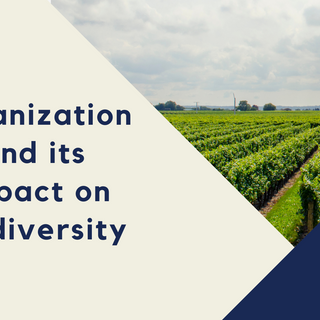Urbanization and its Impact on Biodiversity
- Kumar Naveen
- Jun 22, 2021
- 3 min read
As per the population estimates released by the United Nations in 2018 about 55% of the world’s population resides in urban areas. And that number is expected to increase by 68% by the year 2030. This would directly mean that there would be rise in urban settlements to support the increasing urban population. But when environmental impact is brought into the picture, one of the studies conducted by Mcdonald et.al(2014) projects that about 10% of urbanization in eco regions could result in a loss of 80% of endemic vertebrate species all over the world. So, these numbers would showcase how urbanization could be detrimental to the environment’s sustainability over the longer run.
Presently, the majority of the world’s cities are located in biodiversity-rich areas such as floodplains, estuaries, and coastlines. Resulting in entirely transforming biodiversity hotspots such as the Atlantic forest region of Brazil, the Cape of South Africa, Western Ghats of India, and coastal Central America. But these areas are equally valuable for conserving biodiversity. By understanding the stark dangers associated with urban spaces and their impact over biodiversity, the policymakers have to prioritize the environment as an important agenda while formulating and implementing steps to improve urban spaces.
Accordingly, the first step should aim at increased land-use for green spaces in various localities wherein mandates have to compulsorily push commercial and residential developers to allocate certain percentages for green spaces. In addition to that, urban local gardens can be promoted by keeping an eye on which species have to be incorporated into the local environment. Combined with that, regular inspections carried out by semi-autonomous bodies and strict penalties are a must. Besides that, governments should also work on incentivizing the stakeholders for contributing to the environment as well. In this way, people can be nudged and encouraged to take part in the process to improve bio-diversity.
The second step can involve taking the help of science and local knowledge for improving the results of conservation and regeneration practices. Elaborately what I meant to say was that extensive scientific involvement is required which should focus on incorporating and researching upon local species irrespective of whether their populations are abundant or declining in the urban settlements. By doing so, the urban areas can be restored by respecting the local conditions which can in turn help in reducing the impact of invasive species over a longer run. On the other hand, a localized approach can also help in creating food chains where optimal use of resources is ensured to keep the environment stable.
Before taking these policy measures, the government also has to understand that people are the integral beneficiaries at the end of the day. Hence their cooperation is vital for bringing in the necessary changes. Correspondingly, the local governments are the ones that need to be empowered to take a call on what’s beneficial or not on behalf of the entire community. Alongside, local communities are also to be consulted before drafting a policy and as said earlier, even communities should be incentivized.
In the end, these steps can eventually help in building collaborative networks which can help in transforming the societal mindset entirely.
In conclusion, urban spaces are indeed threatening global biodiversity. But humans do have a chance to improve the future scenario. Therefore, to achieve better outcomes, the policymakers have to reply upon investments from both public as well private sector’s side. Even though, the intent in actuality has to come from the government’s side towards improving the biodiversity. Apart from that, international agencies and governments around the world have to develop a framework of various indicators to measure biodiversity’s progress in urban spaces. In doing so, the measures can help in pushing the governments and the local communities to identify the loopholes, and accordingly, better solutions can be formulated.
References:
Convention on Biological Diversity. (2015). Cities and Biodiversity Outlook. https://www.cbd.int/authorities/doc/cbo-1/cbd-cbo1-book-f.pdf.
Elmqvist, T., Zipperer, W. C., & Gii.neralp, B. (n.d.). URBANIZATION, HABITAT LOSS AND BIODIVERSITY DECLINE: Solution, pathways to break the cycle. https://www.srs.fs.usda.gov/pubs/ja/2016/ja_2016_zipperer_001.pdf.
McKinney, M. L. (2002, October 1). Urbanization, Biodiversity, and Conservation: The impacts of urbanization on native species are poorly studied, but educating a highly urbanized human population about these impacts can greatly improve species conservation in all ecosystems. OUP Academic. https://academic.oup.com/bioscience/article/52/10/883/354714.
Rastandeh, A., & Jarchow, M. (2020). Urbanization and biodiversity loss in the post-COVID-19 era: complex challenges and possible solutions. Cities & Health, 1–4. https://doi.org/10.1080/23748834.2020.1788322
UN report warns of effects of urban expansion on biodiversity. Down To Earth. (n.d.). https://www.downtoearth.org.in/news/un-report-warns-of-effects-of-urban-expansion-on-biodiversity--39354.
United Nations. (n.d.). 68% of the world population projected to live in urban areas by 2050, says UN | UN DESA Department of Economic and Social Affairs. United Nations. https://www.un.org/development/desa/en/news/population/2018-revision-of-world-urbanization-prospects.html.













Comments